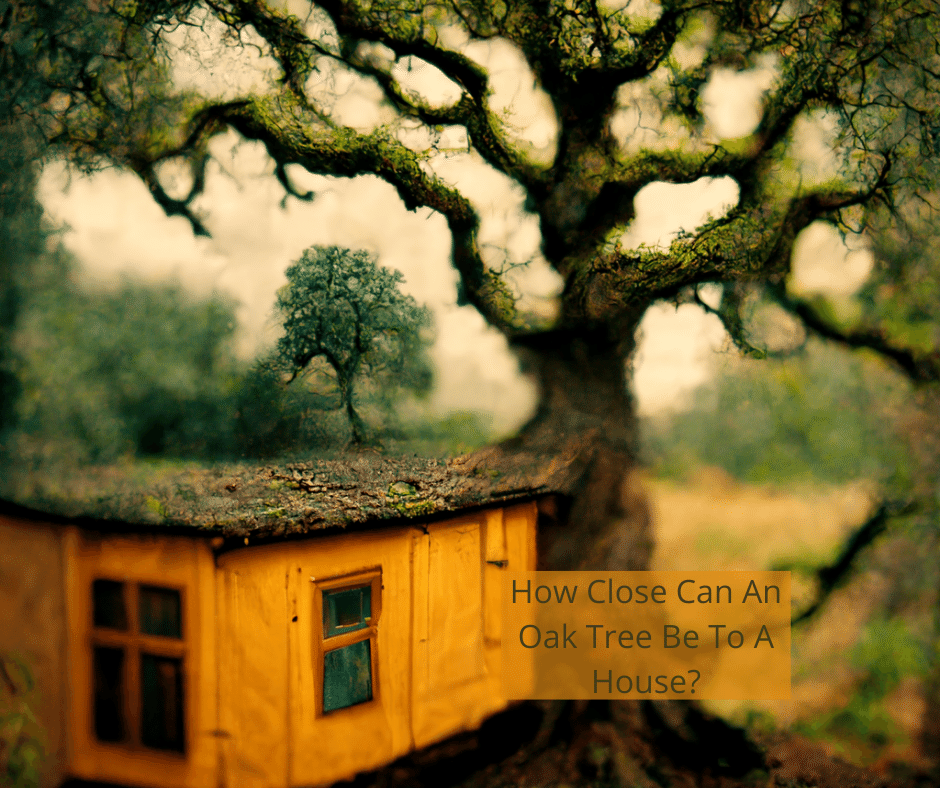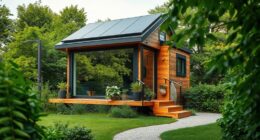I’m here to assist you in navigating the thrilling adventure of obtaining financial assistance for your dream of owning a tiny home and property.
From exploring traditional financing options to tapping into government assistance programs, I’ll guide you through the process step by step.
With crowdfunding, community support, and self-financing strategies at your disposal, you’ll discover a world of possibilities.
Let’s dive into this article to uncover alternative financing options and make your dream a reality.

Key Takeaways
- Traditional financing options such as personal loans or mortgage loans from banks or online lenders can secure funds for a tiny house and land project.
- Government assistance programs, including grants, subsidies, and low-income housing programs, can provide financial support for acquiring land, construction, or renovations.
- Crowdfunding and community support can be effective in raising funds for a tiny house and land project by sharing the project on crowdfunding platforms and engaging with the community.
- Self-financing strategies like seller financing, personal savings, and cutting expenses can be explored to accumulate enough funds for acquiring a tiny house and land.
Exploring Traditional Financing Options
I can start exploring traditional financing options to get financial support for my tiny house and land. There are several avenues I can explore, such as personal loan options and mortgage possibilities.
Personal loans can be obtained from banks, credit unions, or online lenders. These loans provide flexibility in terms of repayment and can be used for various purposes, including funding a tiny house project.
On the other hand, mortgage options can be explored if I’m looking to purchase land along with my tiny house. This involves applying for a mortgage loan from a financial institution that specializes in financing land and property.
By considering these traditional financing options, I can secure the necessary funds for my tiny house and land project.
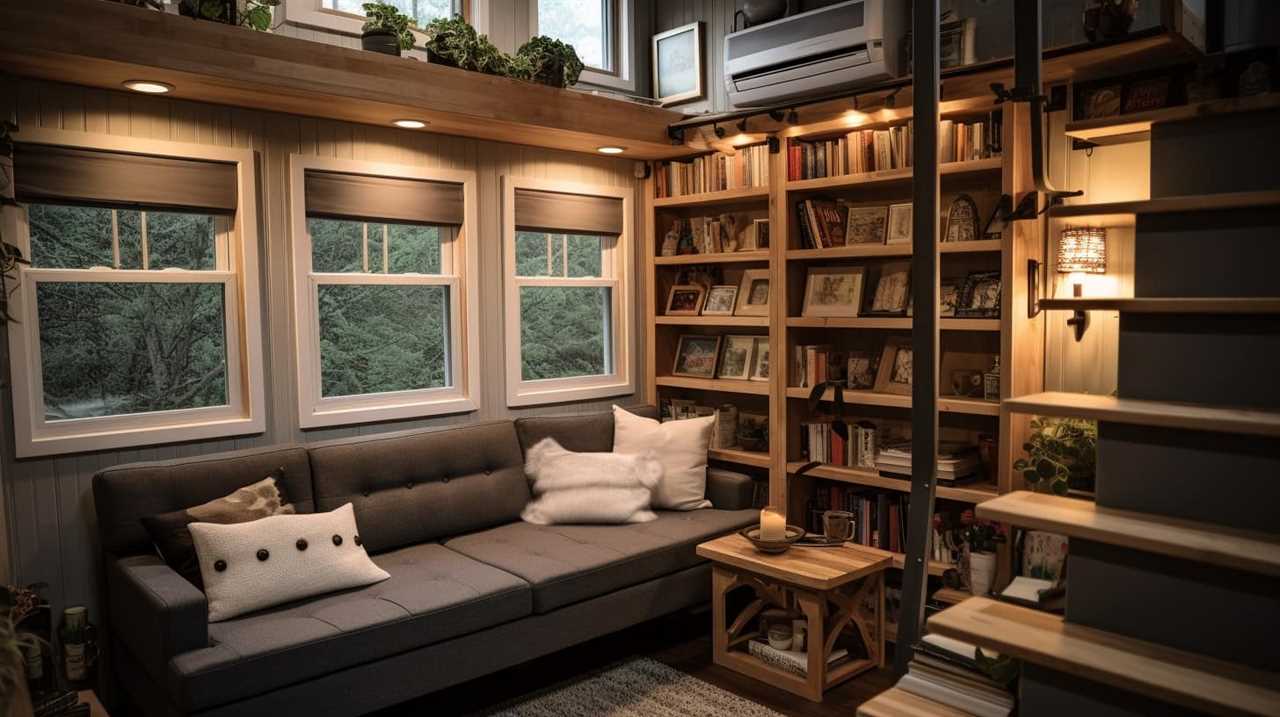
However, if I need further assistance, I can also tap into government assistance programs that cater specifically to housing projects like mine.
Tapping Into Government Assistance Programs
To tap into government assistance programs, I can explore options such as grants, subsidies, and tax incentives that are available for funding my tiny house and land project. Government grants can provide financial support specifically designed for low-income individuals or families who are looking to build or purchase affordable housing. These grants can help cover the costs associated with land acquisition, construction, or renovations. Additionally, there are various low-income housing programs that offer subsidies to help reduce the monthly costs of homeownership, making it more affordable for individuals with limited financial resources.
Taking advantage of these government assistance programs can significantly alleviate the financial burden of funding a tiny house and land project.
Transitioning into the next section, crowdfunding and community support can also be effective strategies to raise funds for this endeavor.
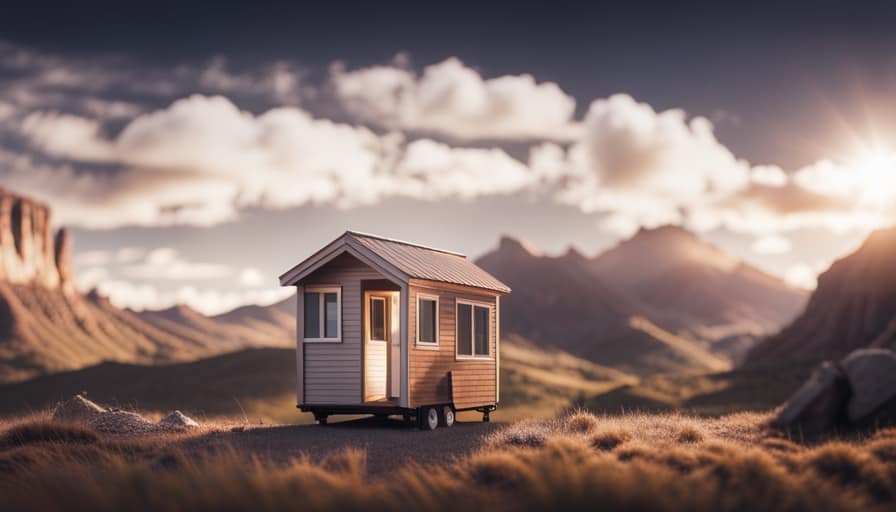
Crowdfunding and Community Support
One effective way to raise funds for my tiny house and land project is through crowdfunding and community support. This approach allows me to reach out to a wider audience and tap into the collective power of a supportive community.
Here are three reasons why community fundraising and crowdfunding can be a great option for financing my project:
-
Increased visibility: By sharing my project on crowdfunding platforms and engaging with my community, I can attract attention and support from a larger audience.
-
Shared ownership: When people contribute to my project, they become invested in its success. This shared ownership can create a strong sense of community support.
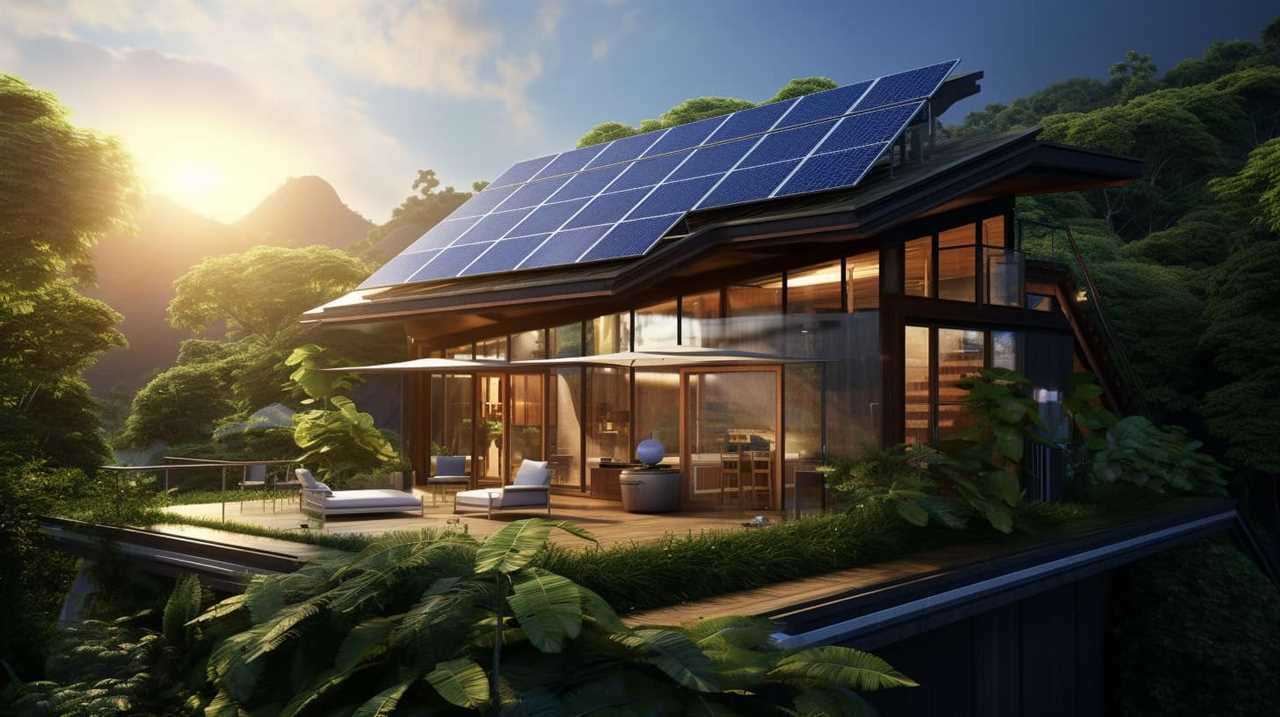
-
Loan options: Some crowdfunding platforms also offer loan options, allowing me to secure the funds I need while providing backers with the opportunity to earn a return on their investment.
Self-Financing Strategies for Tiny House and Land
A potential strategy for financing my tiny house and land project is to explore self-financing options.
One option is seller financing, where the seller acts as the lender and allows the buyer to make monthly payments directly to them. This can be a mutually beneficial arrangement as it eliminates the need for a traditional mortgage and allows for more flexibility in negotiating terms.
Another option is to use personal savings to fund the project. By saving diligently and cutting expenses where possible, it’s possible to accumulate enough funds to cover the costs of both the tiny house and the land. However, it’s important to consider the time and effort required to save enough money and to ensure that it aligns with your long-term financial goals.

Exploring alternative financing options can provide additional avenues to secure funding for your tiny house and land project.
Exploring Alternative Financing Options
I can consider applying for a loan from a credit union or community bank to explore alternative financing options for my tiny house and land project. While traditional lenders may not be familiar with financing tiny homes, there are other options available that cater specifically to alternative housing projects.
Here are some alternative financing options to consider:
-
Microloans for tiny house and land: Microloans are small loans typically offered by non-profit organizations or community development financial institutions. These loans are specifically designed to help individuals finance small-scale projects, such as building a tiny house. They often come with more flexible terms and lower interest rates than traditional loans.

-
Peer to peer lending for alternative housing finance: Peer to peer lending platforms connect borrowers directly with individual lenders, bypassing traditional financial institutions. These platforms provide an alternative way to access funding for your tiny house and land project, with potentially lower interest rates and more flexible repayment options.
-
Crowd funding: Crowd funding platforms allow you to raise funds from a large number of people who are interested in supporting your tiny house and land project. By creating a compelling campaign and showcasing your vision, you can attract individuals who are passionate about alternative housing and willing to contribute financially.
Exploring these alternative financing options can help you find the funding you need to make your tiny house and land project a reality.
Frequently Asked Questions
Can I Use My Existing Mortgage to Finance a Tiny House and Land?
Using my existing mortgage for a tiny house and land has pros and cons. It can provide convenience but might require refinancing. Alternatively, explore financing options like personal loans, RV loans, or crowdfunding to purchase a tiny house and land.

Are There Any Grants Available Specifically for Financing a Tiny House and Land?
There are alternative financing options for purchasing a tiny house and land, such as exploring crowdfunding opportunities. Grants specifically for financing a tiny house and land may also be available.
Can I Use a Personal Loan to Finance the Purchase of a Tiny House and Land?
Yes, you can use a personal loan to finance the purchase of a tiny house and land. However, it’s important to consider other options like using personal savings or crowdfunding for a more sustainable and affordable approach.
Are There Any Tax Benefits or Incentives for Financing a Tiny House and Land?
There are potential tax benefits and incentives available for financing a tiny house and land. These can help reduce the overall cost and make it more affordable in the long run.
Can I Use a Home Equity Line of Credit (Heloc) to Finance a Tiny House and Land?
Yes, a home equity line of credit (HELOC) can be used to finance a tiny house and land. However, it’s important to consider the pros and cons, such as interest rates and potential risks, before making a decision.

Conclusion
In conclusion, the journey of obtaining financial support for a tiny house and land can be challenging but not impossible. By exploring traditional financing options, government assistance programs, crowdfunding, and self-financing strategies, individuals can find solutions that work for their unique circumstances.
Additionally, considering alternative financing options can open up new possibilities. Remember, with determination and resourcefulness, the dream of owning a tiny house and land can become a reality, bringing a sense of freedom, simplicity, and fulfillment.
I’m Theodore, and I love tiny houses. In fact, I’m the author of Tiny House 43, a book about tiny houses that are also tree houses. I think they’re magical places where imaginations can run wild and adventures are just waiting to happen.
While tree houses are often associated with childhood, they can be the perfect adult retreat. They offer a cozy space to relax and unwind, surrounded by nature. And since they’re typically built on stilts or raised platforms, they offer stunning views that traditional homes simply can’t match.
If you’re looking for a unique and romantic getaway, a tree house tiny house might just be the perfect option.




